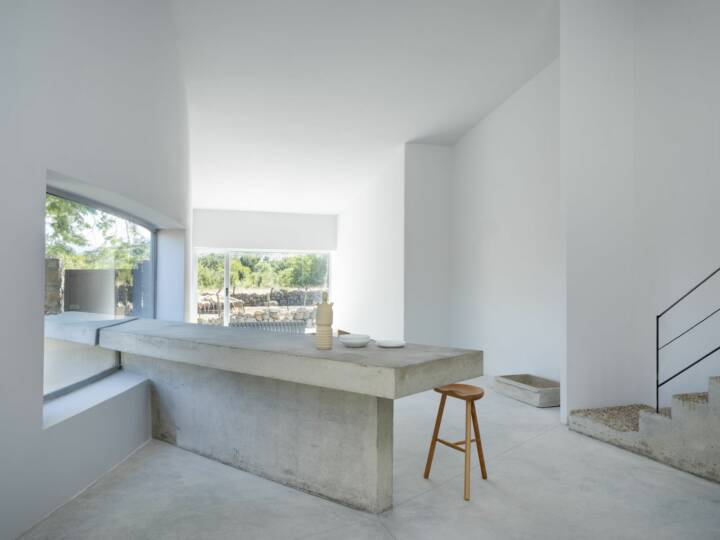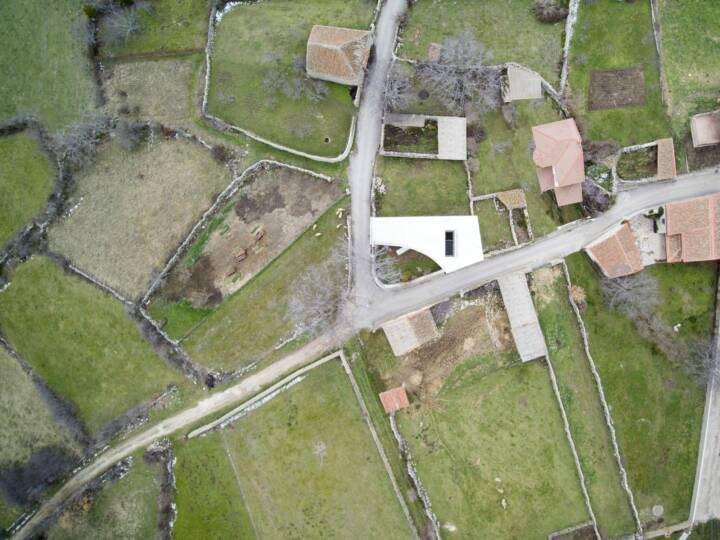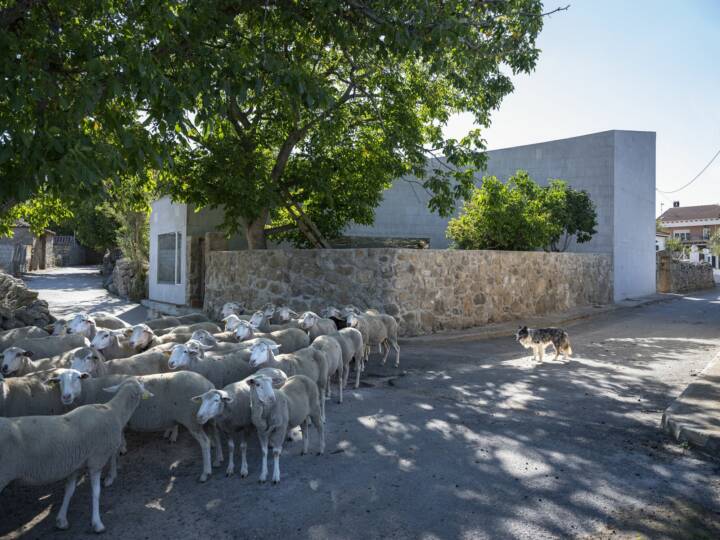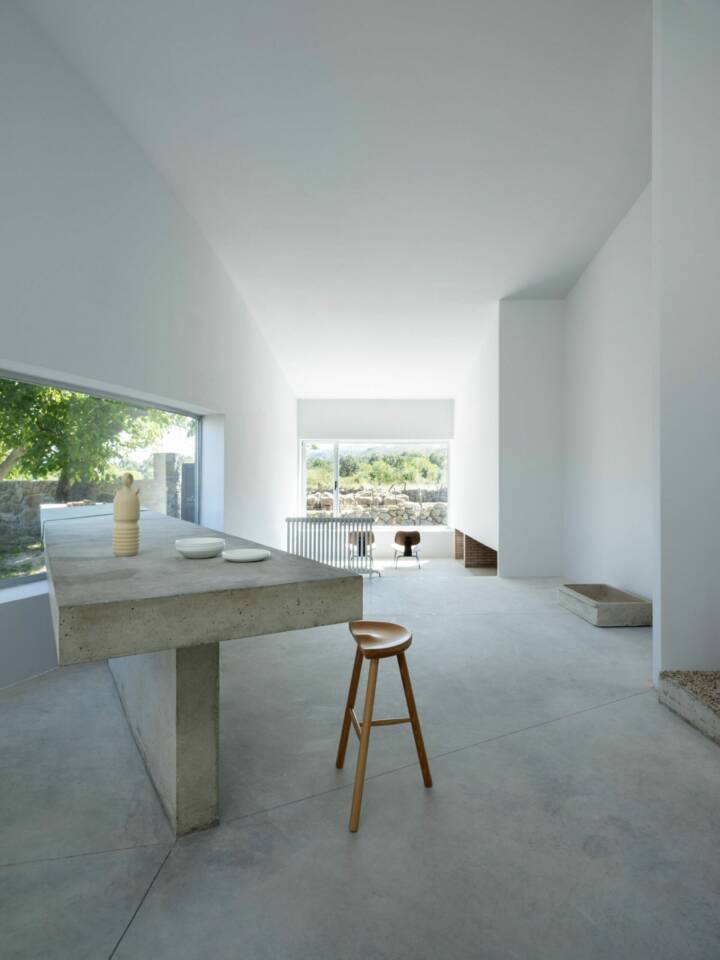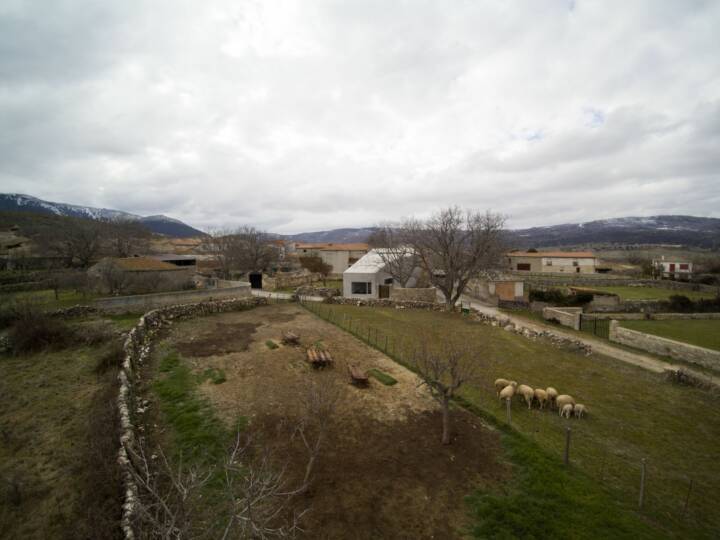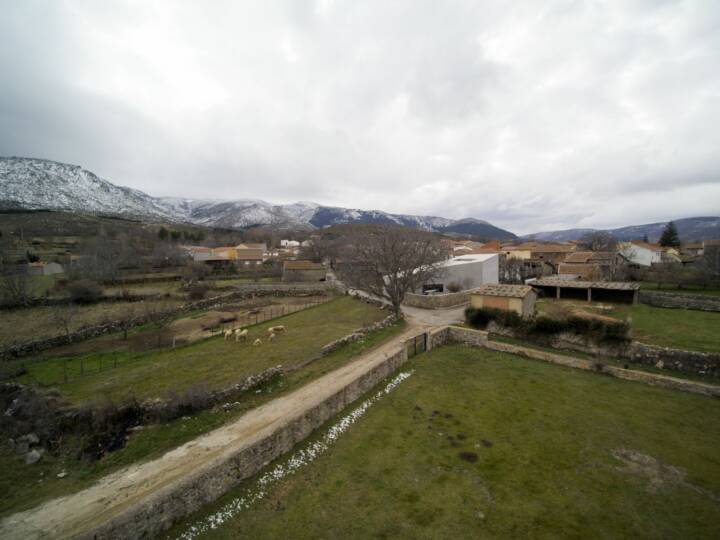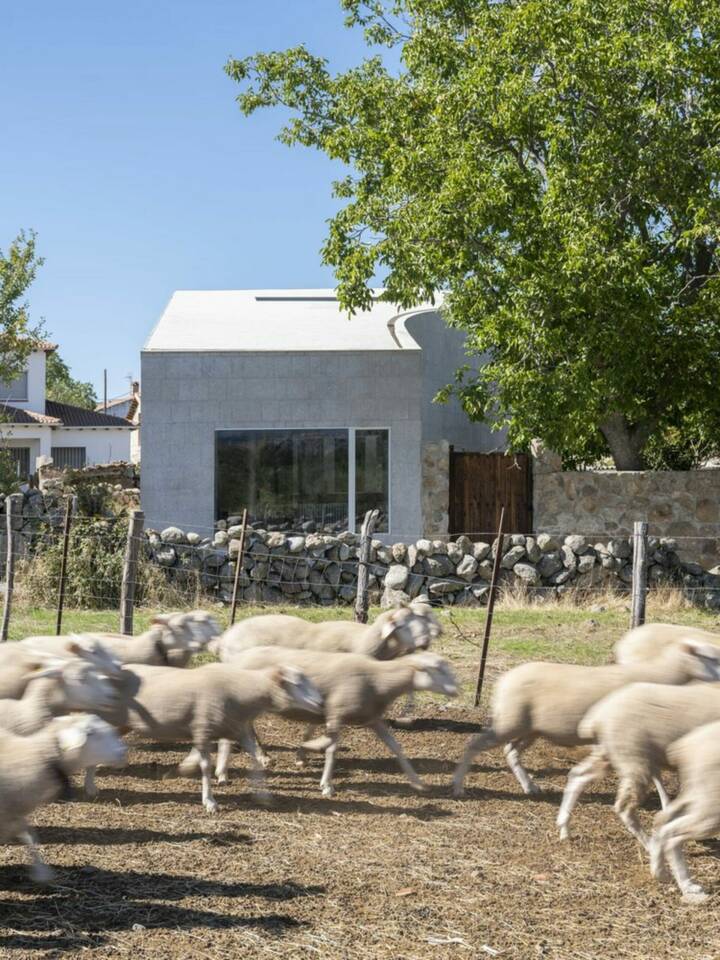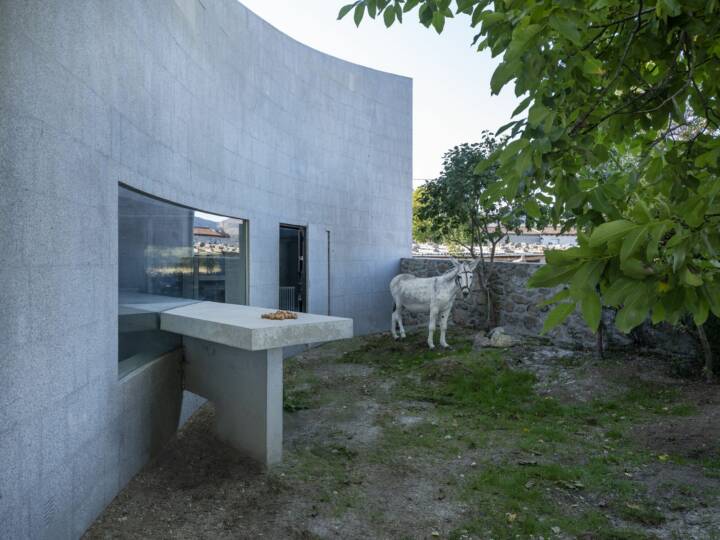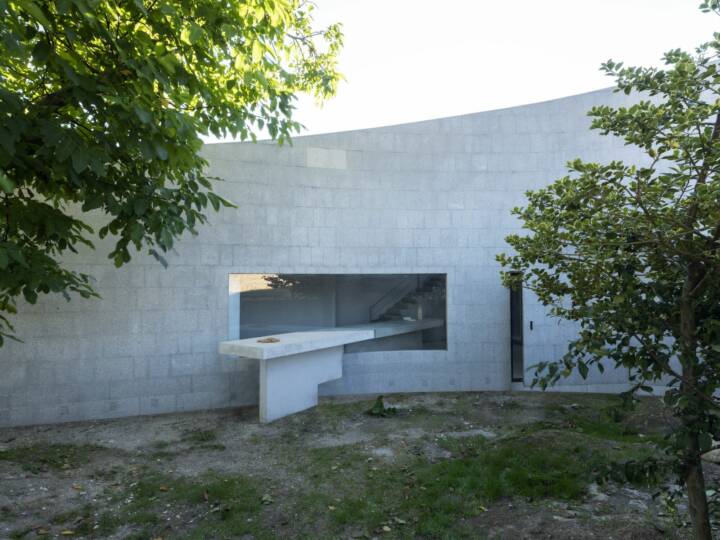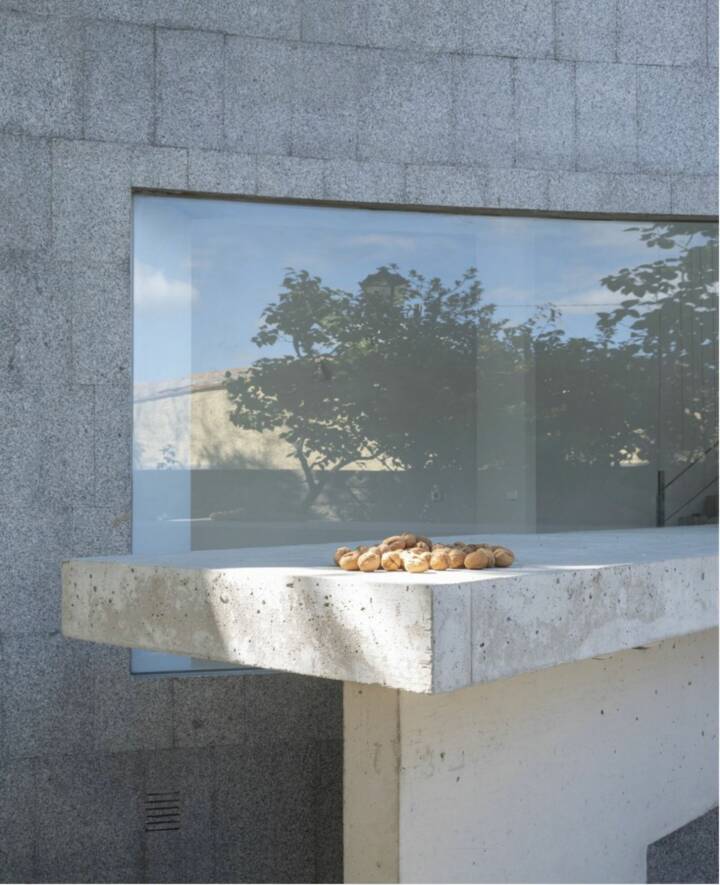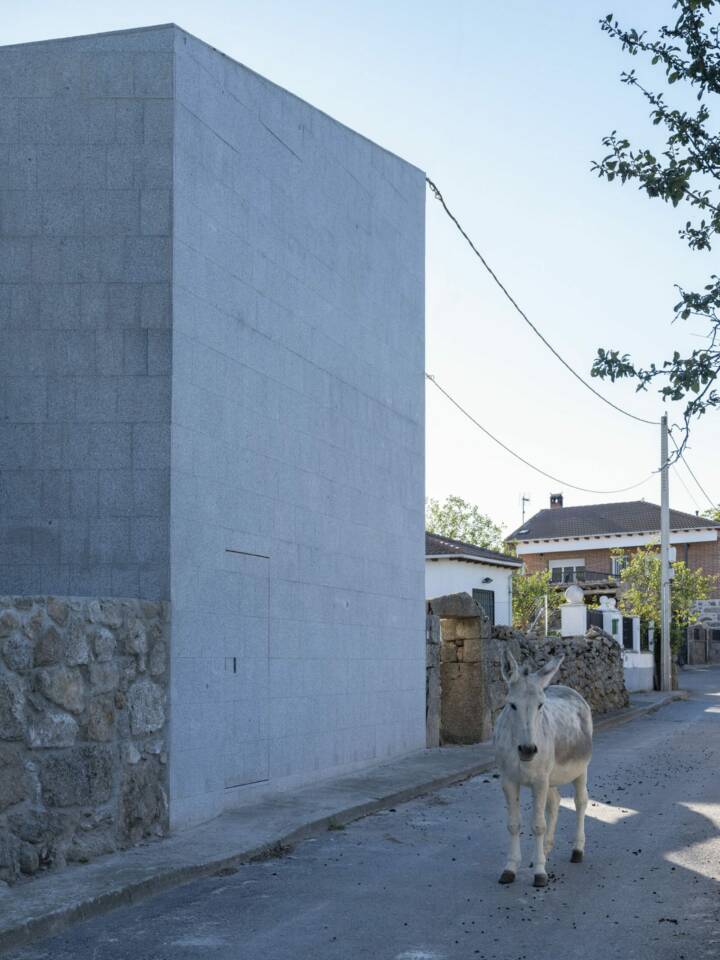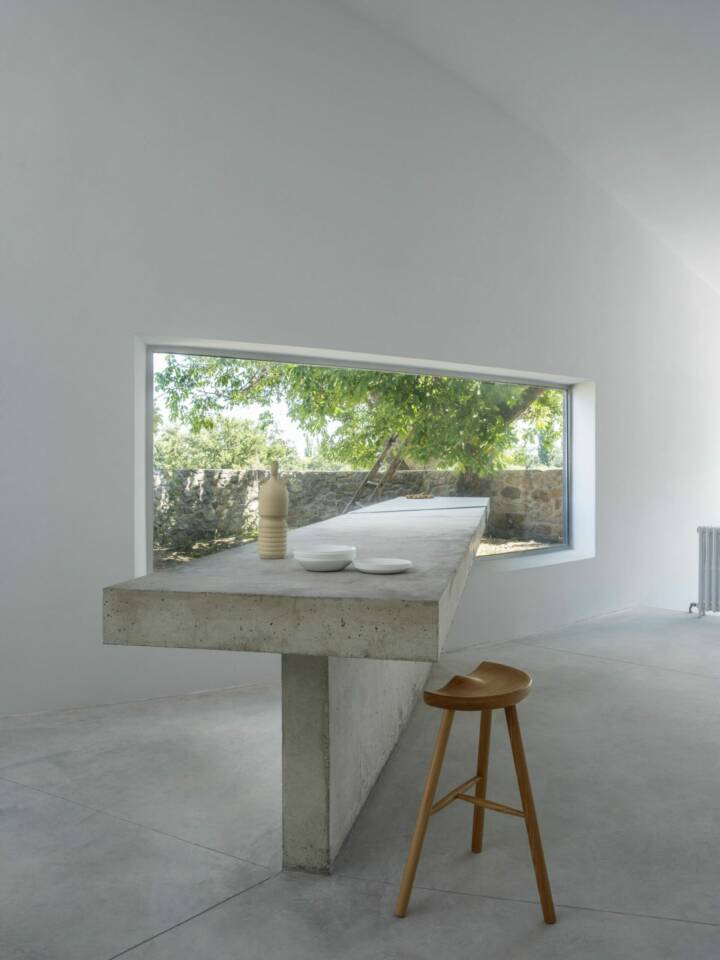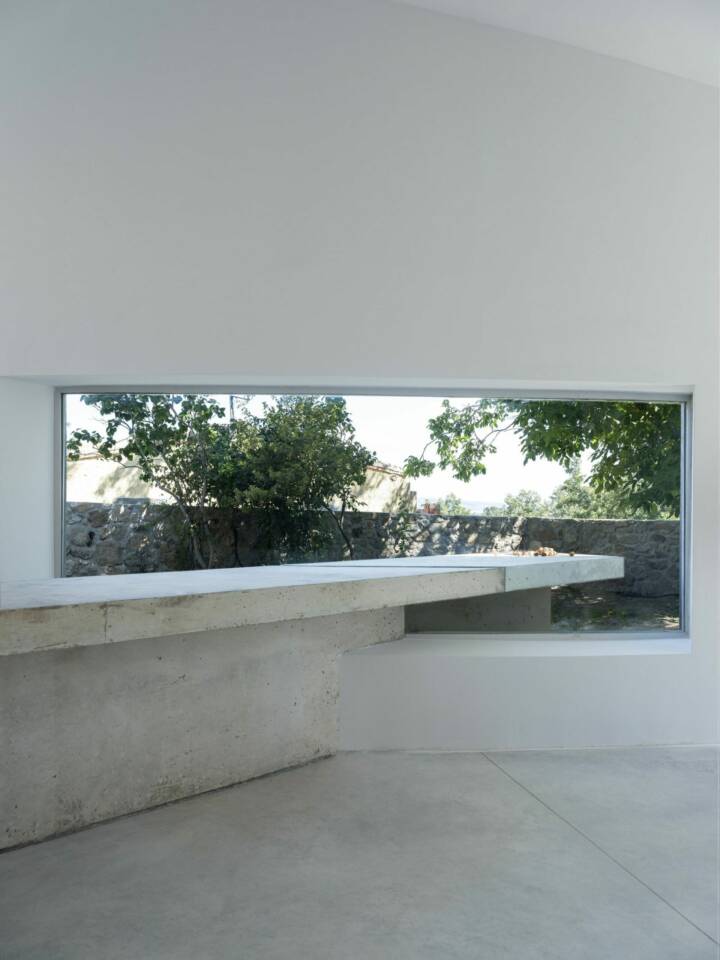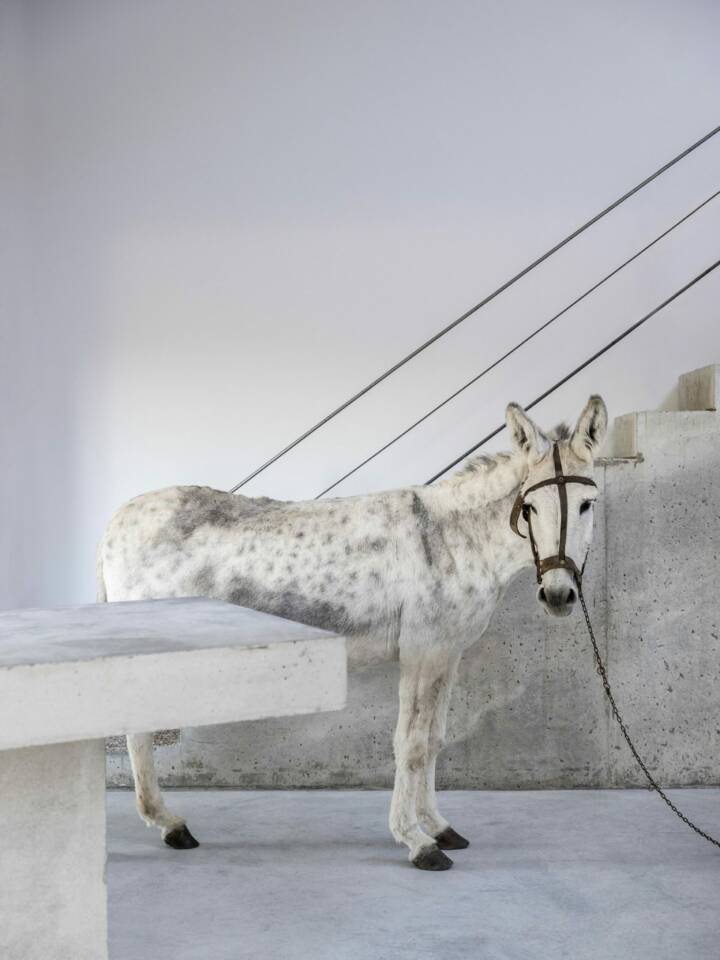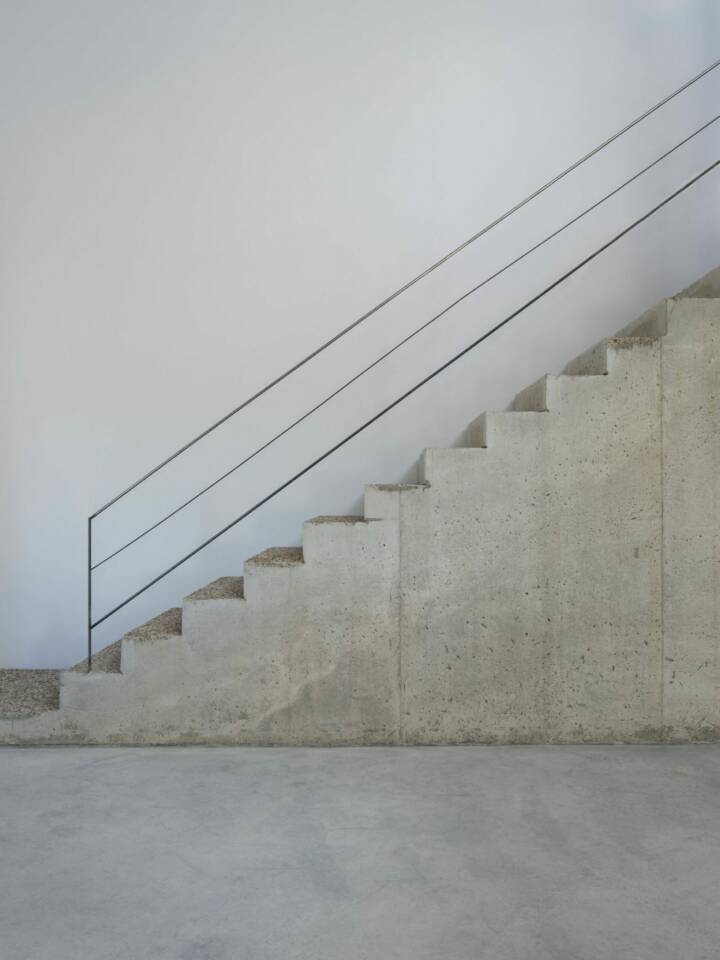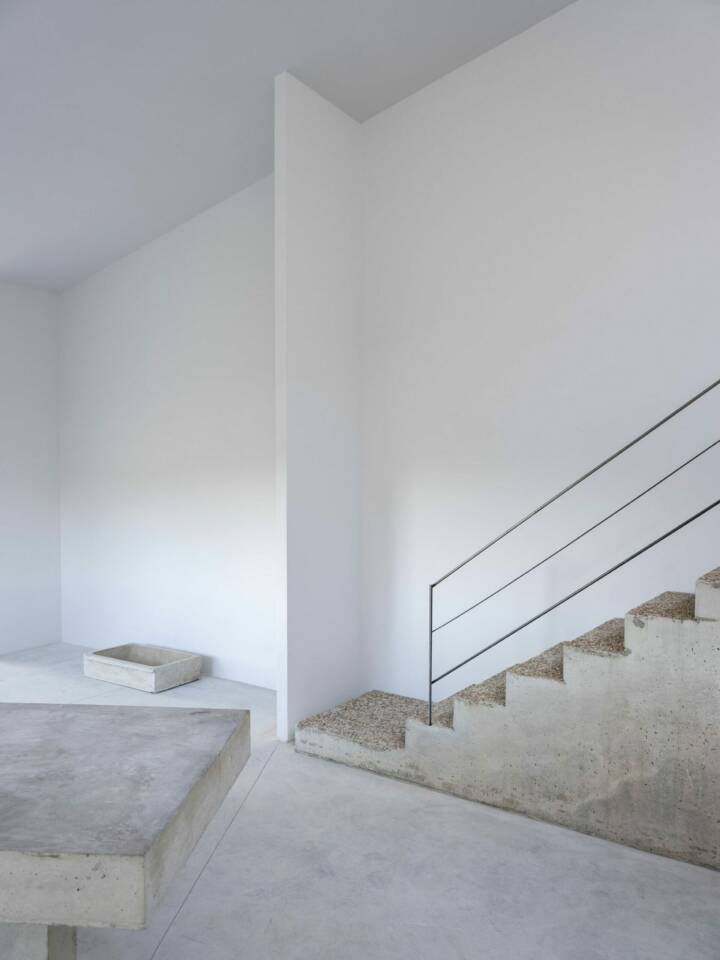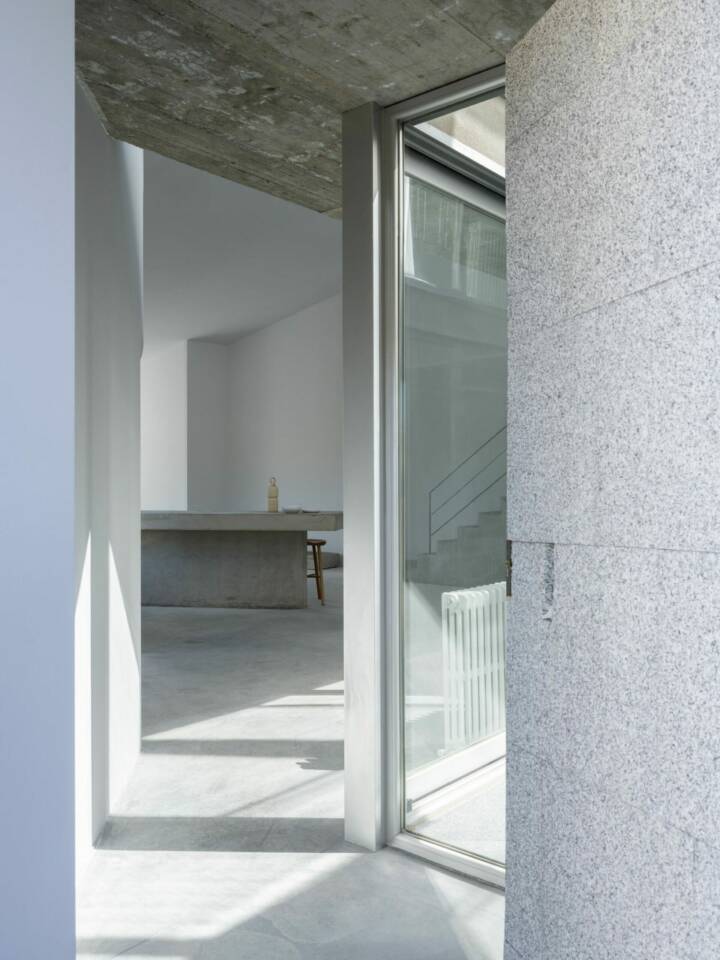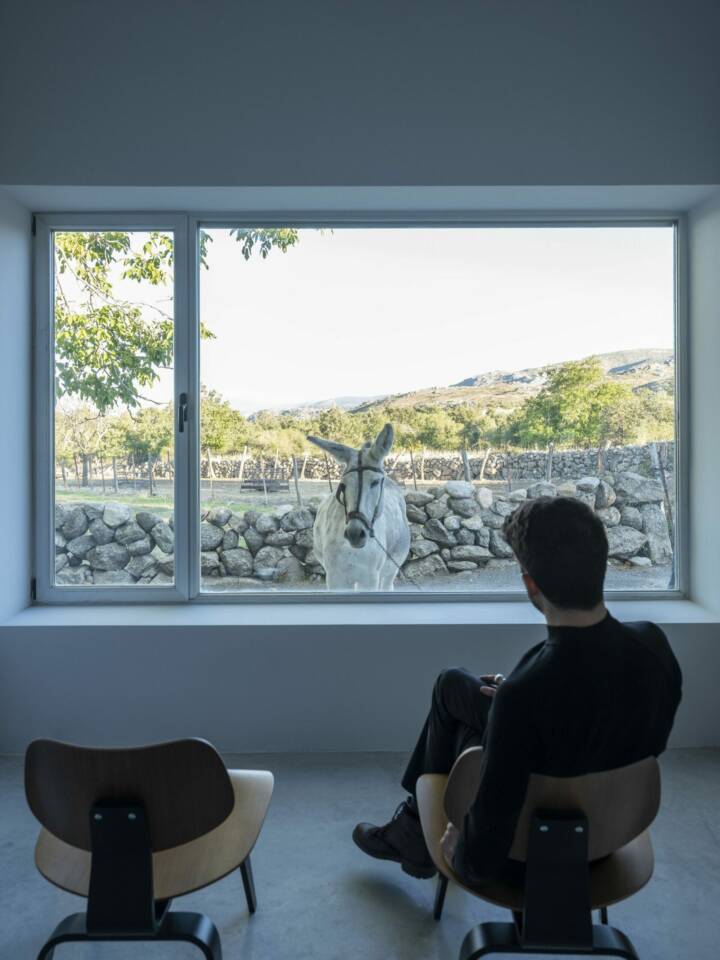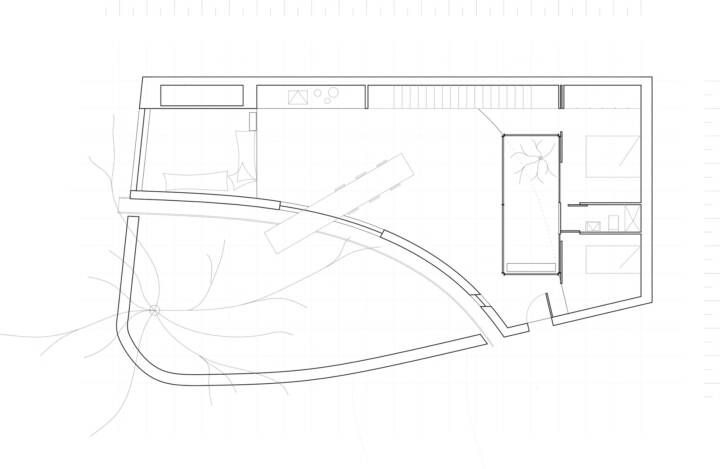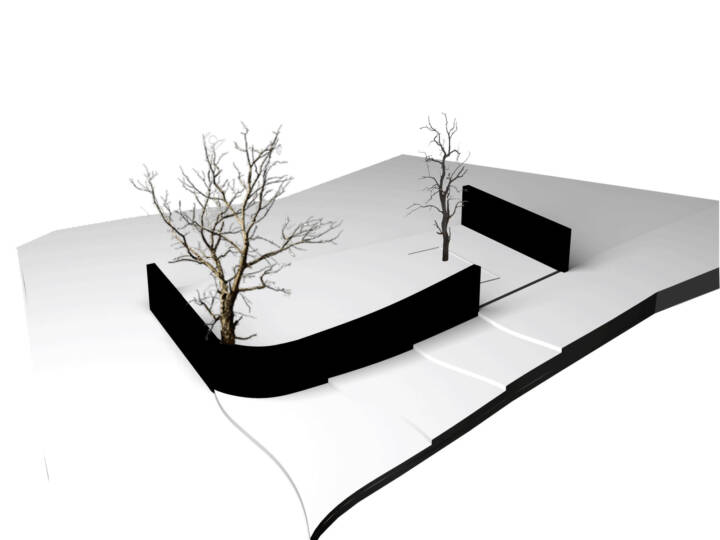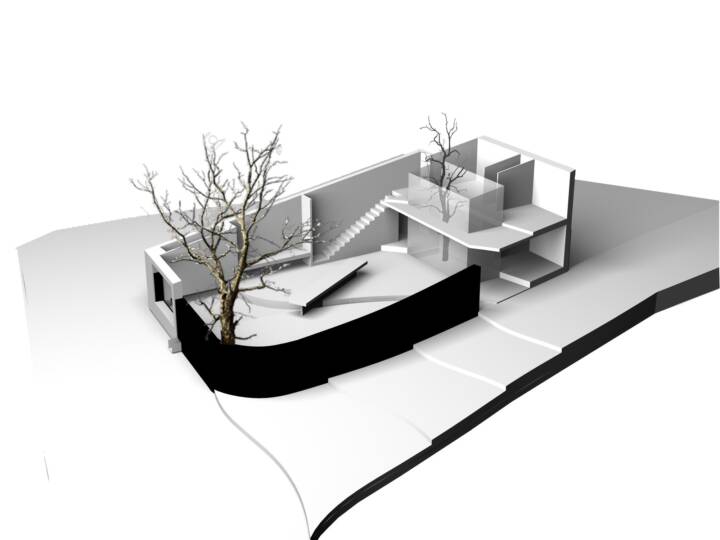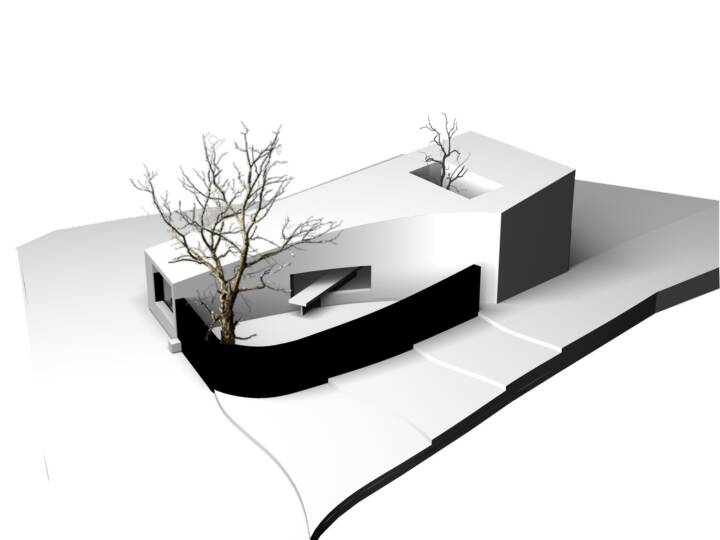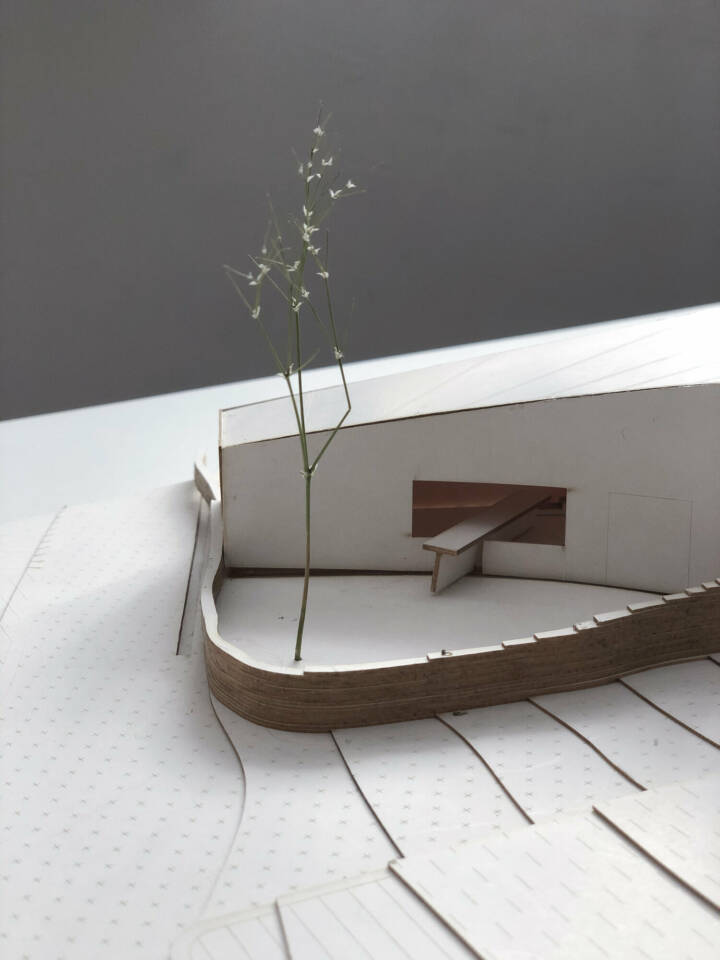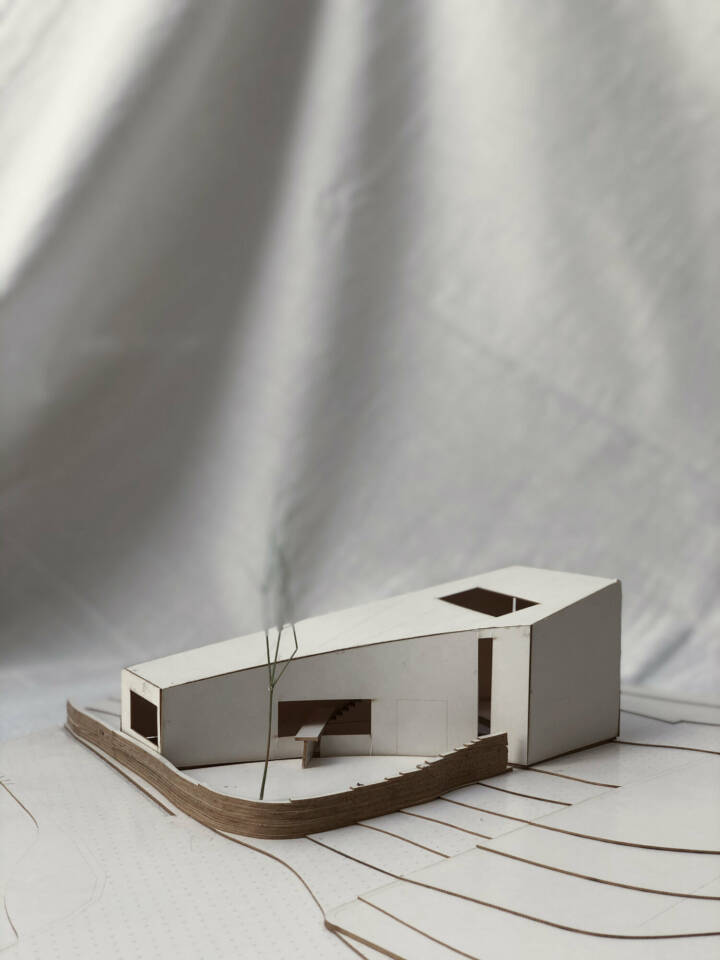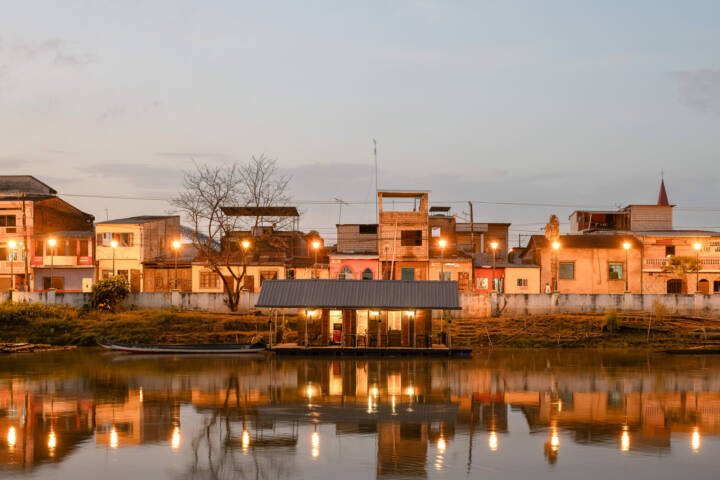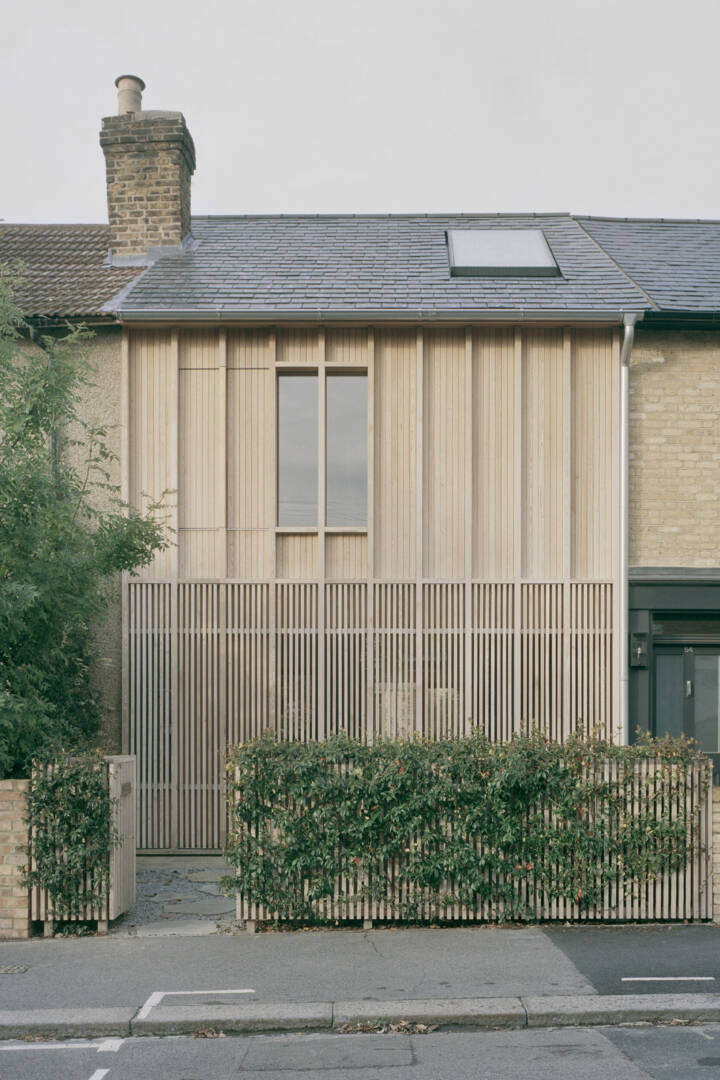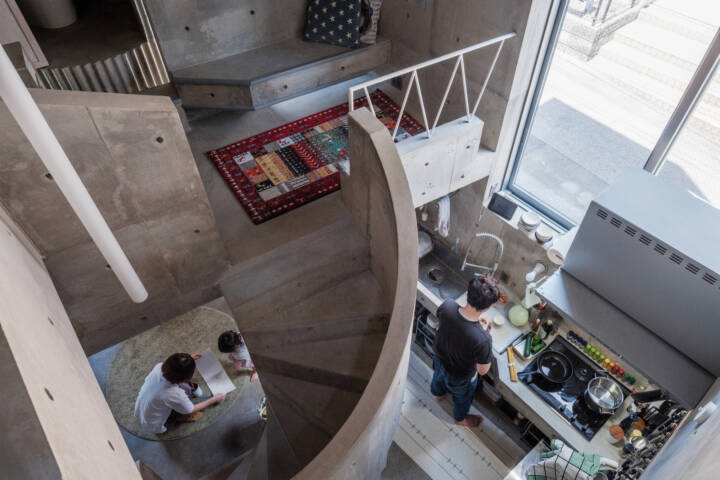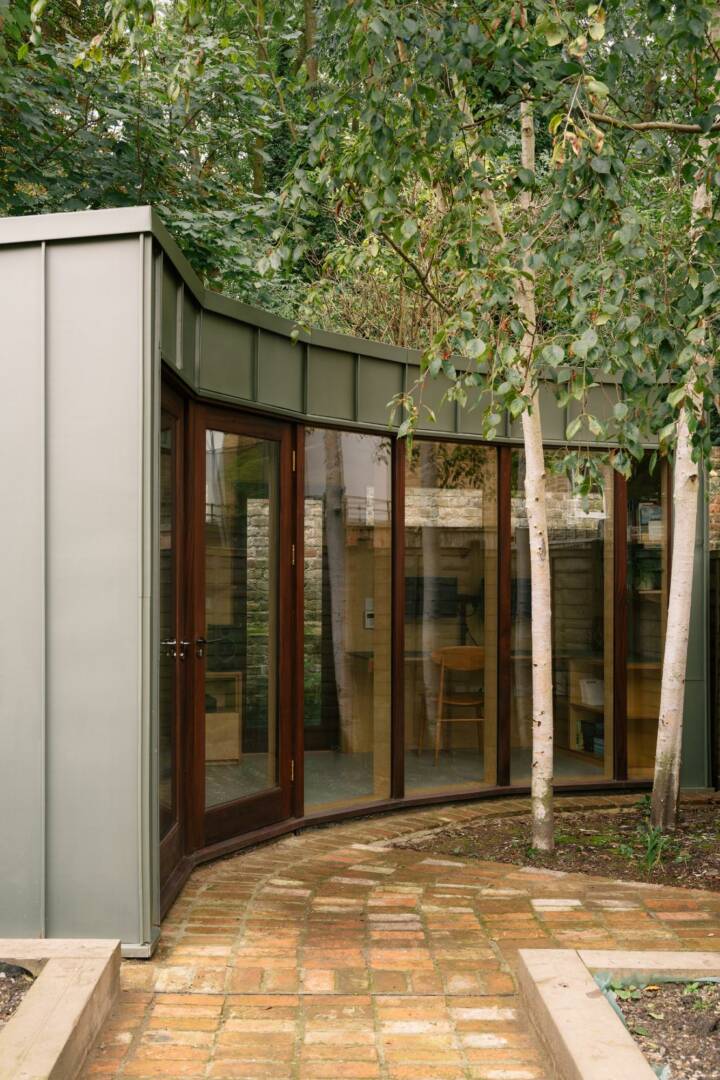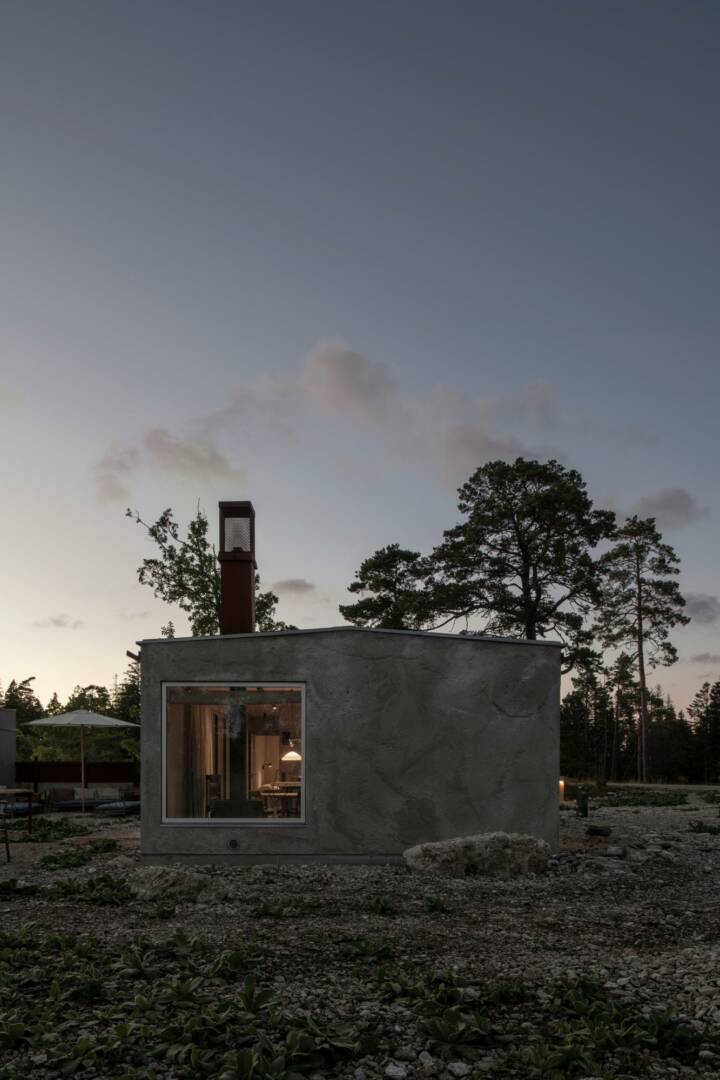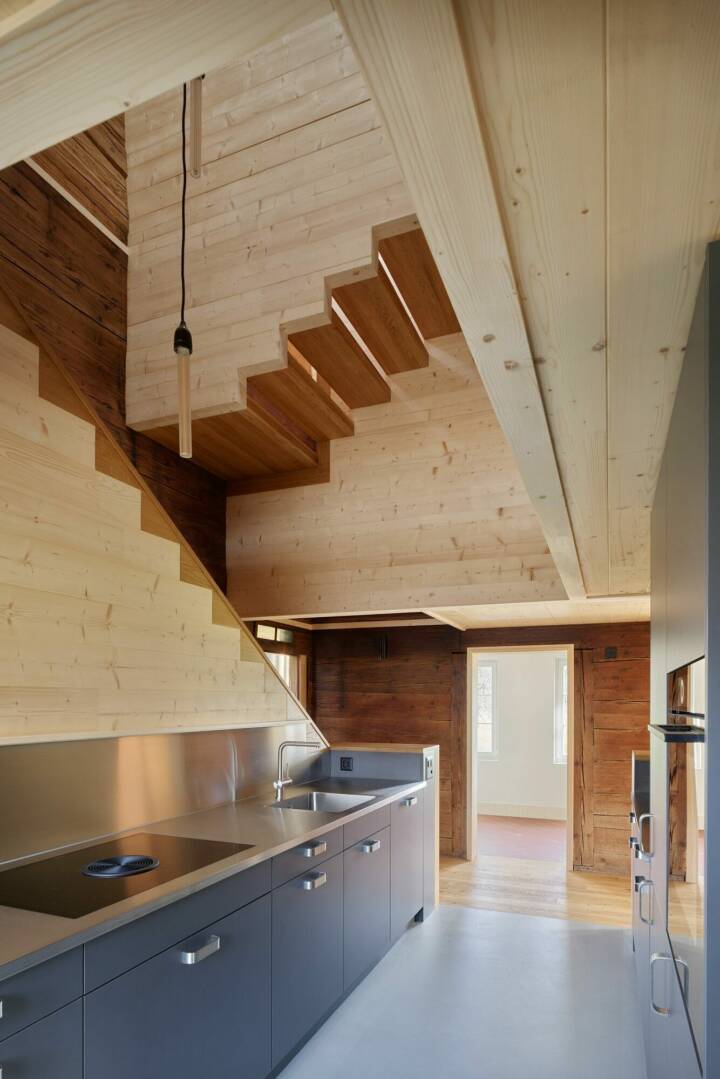Architects: Raúl Almenara Photography: Raúl Almenara Construction Period: 2022 Location: Ávila, Spain
Conversion of an old rural orchard in a town in Ávila, into a home with a contemporary design: Nogal is a single-family home designed to look like a giant rock, a huge inert being that nevertheless harbors life. This very genuine concept is developed under the shade and surroundings of an imposing Walnut tree, the epicenter and soul of the project.
Search for inspiration. Of Persian origin, with deep roots, with dense and elongated shadows. Robust wood and majestic bearing. Walnut is probably one of the trees whose presence cannot go unnoticed, it is one of the kings of nature. Its fruit (the walnut), its silhouette and, in short, its marked characteristics make this a benchmark tree due to its delicacy: it does not withstand strong frosts, nor very high temperatures, as well as a minimum of rainfall must be guaranteed so that its growth is proper and harmonious. This makes finding a walnut tree with these characteristics something truly exceptional.
In search of a close relationship with nature, and in an act of enhancing the value of this hundred-year-old walnut tree, a house with a stone character has been built, reminiscent of those rocks in the landscape, which is projected around this figure. Although it is true that we are going to see all the characteristics of the building, we can never talk about it without keeping in mind what the soul of the project is, in which nature and artifice, sustainability, art and architecture are more intertwined than ever.
Read MoreCloseBut this would not be the only element that would attract the attention of nature in the province of Ávila. In the first train trips to the town, it was observed in the plains how a strong contrast reigned between a flatter and vacant terrain in front of some crags and granite rocks of quasi-human scale that leaned like sculptures on it.
Design nature. The project is located in full connection with nature, in an old orchard surrounded by a wall of granite stones, where a walnut tree has always reigned. It starts from a position of respect for these two elements, the tree and the wall, to end up blending in with the environment. The project is conceived as a large granite rock from the Sierra de Ávila, which is deformed around the walnut tree, to which homage is paid. Thus, it becomes a large curved solid with a stone character, its interior being sculpted in the same stone to house the spaces of domestic life.
The house, linked to the landscape, would be one more stone, typical of the landscapes of the Sierra de Ávila. Hence the decision to finish the façade: a large granite wall that bets on the solid condition as opposed to the permeable. A solution that is taken to the extreme, covering the access doors of the house with this material. The roof is also covered with the same material, with the aim of giving continuity to the volume, generating the concept of a solid.
The roof takes up the vernacular language typical of the area, leaning only on a slope that sculpts the solid on its upper face, facetting it both on the outside and on the inside, which causes a large sloping roof.
The house has three large openings to nature, which create a home full of light; a first opening around which the house turns with views of the garden – walnut. It is a large curved glass of large dimensions, a single piece and curved specifically and by hand for the home. A second opening to the frontal landscape, with views of transhumance in the area. The third large opening, consists of a multitude of windows, and is a look at the sky, at the stars. It connects the bedrooms with the sky, making it possible to fall asleep looking at the stars. The rest of the façade is completely opaque, preventing the relationship of the house with the urban environment, betting on a strategic connection with nature.
Back to the openings, a great value of the project is contemplated in the first one. The generously sized curved glass that curves around the walnut. This opening contains a completely new element in the history of architecture, a large stone table that goes through this large glass. Beginning its journey in the dining room and ending it outside in the garden under the shade of the walnut tree. A clear gesture of the connection of the domestic interior with nature. It is the soul of this design, created with the aim of supporting activities both inside and outside the home, facilitating a way of life in continuous contact with nature.
Upon entering the house, we find the third large opening we were talking about, the interior patio, which tells us that this work was born to be enjoyed in the company of natural elements. The patio is completely permeable, the glass that protects it moves to fully communicate with the rest of the rooms in the house. And around this interior courtyard the housing program is divided: public, on the left, and private, on the right.
Following the public route typical of any visitor, we will find the large double-height room with a sloping ceiling: a room that houses the functions of dining room, kitchen, living room and distributor, starring the large table. It is followed by the winter living room on a level below it, at 34 cm. It is presided over by a fireplace around which two designer armchairs are placed to enjoy the landscape that we observe through the glass of the second opening, while listening to the crackling of the large fireplace. In this place the ceiling is much lower, causing a more welcoming environment.
If we reverse the direction of the tour, we find the rooms, located on two upper levels of the house. Something strategically designed to observe the sky, the stars at night. “Living under the shelter of a walnut tree is how I understand the experience in this house”
The detail. The project works mainly with the stony condition. From the first phase, the house is committed to this decision, being structurally built in concrete, the stone of the 21st century. The stairs made of granitic pebbles from the Avila river compacted with cement, which make this a sculptural piece. The façade, the roof, the sinks, the bathroom and kitchen coverings, the doors and even the tables are committed to this materiality.
The rest of the solutions are contemplated around the other two secondary materials: glass and metal, avoiding wood so as not to make it compete with the material characteristics of Walnut. This is the case of the large windows that fill the house with light and especially the large curved glass made specifically for the house and which is crossed by the large table. In metal we will find the tensioned steel cable railings that are anchored to the floor and ceiling, generating the lattice effect close to that of the shadows typical of a tree. “Understanding the liquid character of the architecture of the 21st century in which the construction can be deformed to bet on a life in contact with nature.”
Text provided by the architect.
